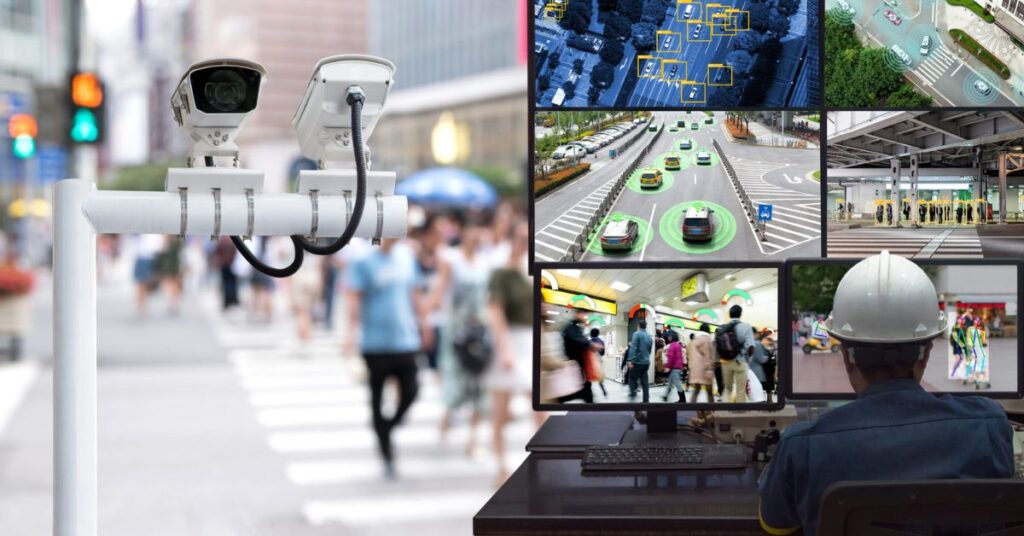CCTV systems (Closed-Circuit Television) is a strong deterrent appearing within communities. The employment of visible cameras in public places or private offices prevents people from perpetuating crimes like theft, vandalism or assault. It is common knowledge among future criminals that they are being watched as they prepare to do their thing. Hence, they keep questioning themselves if it is right to commit the crime. The psychological impact of surveillance through temporary CCTV tower providers has a strong effect on preventing crimes as offenders fear the risk of being discovered and arrested.
Surveillance and Monitoring:
One of the salient features of CCTV systems is live surveillance and observation of public spots. By positioning cameras strategically, operators can observe different activities in different places, which provides a general overview of the community. Live monitoring helps authorities to identify instances of suspicious behaviour or emergencies early, which enables timely response. Also, footage that is recorded can be replayed in the future to determine occurrences or collect evidence. This uninterrupted vigilance guarantees the environment of the community is maintain ahead of time.

Prompt Response to Incidents:
CCTV helps prevent delays in responding to incidences since those in charge can watch as developments continue happening. Upon detection of suspicious behaviour, accidents, or criminal acts in the feed streams, law enforcement agents or security personnel can receive quick alerts. Quick response is essential in preventing crimes from getting out of hand, minimizing the impact on individuals and arresting the perpetrators promptly. The role of CCTV technology is to facilitate coordination of responses, efficient deployment of resources, and timely response to emergencies, thereby improving public safety all over.
Evidence Collection for Law Enforcement:
When there is a crime or incident, CCTV footage provides irreplaceable evidence for law enforcement to investigate and for the court to plead. Audio and visual recordings can be vital in disclosing the course of events, names of the participants as well as other vital information which can be used in solving a crime and bringing perpetrators to book. The excellent video clips which are capture by the well-equipped CCTV systems can be helpful in identifying offenders, supporting the statements of eyewitnesses and strengthening cases against guilty persons. Moreover, video recordings supplied by CCTV systems can acquit the innocent or shed light on unclear issues thereby assisting in achieving justice in legal cases.
Enhanced Public Safety Awareness:
The role of CCTV goes beyond fighting crime. It is also vital in instilling public safety consciousness. A general sense of survey is create by the presence of cameras, which makes the people look for more safety measures and be more conscious and watchful of their surroundings. Individuals armed with information that CCTV surveillance is lawfully in use will report suspicious acts immediately, cooperate with law enforcement and apply proactive crime prevention. By raising the awareness of safety concerns there is more community participation and cooperation which results in a safer and more secure environment for all.
Crime Prevention Through Environmental Design (CPTED):
CCTV is consistent with CPTED principles by influencing the design and planning of public spaces so as to discourage crime. Strategically placing cameras in areas likely to commit crime or cause antisocial behavior, city planners and security professionals can shape environments that discourage illicit acts. The visual prominence of security cameras function as deterrents while at the same time capturing valuable data useful in evaluating security systems and informing future design strategies. Linking CCTV to urban planning initiatives results in safer and more livable communities through addressing criminal and anti – social behavior factors arising from the environment.
Support for Emergency Services:
CCTV cameras serve emergency service personnel such as firefighters, paramedics and others in their areas of operation as a backup. The function of CCTV cameras in situations like fires, medical situations or natural disasters is to provide live feed back to responders for them to judge the situation and make a decision accordingly. Receiving the images of the disaster scene in real- time will help the emergency services for better planning, coordination, resource management as well as the avoidance of the injury of respondents as well as the public. CCTV enhances situational awareness and loads people with large amount of knowledge about emerging emergencies hence resulting in a community with better emergency preparedness and response.
Community Engagement and Trust Building:
Community involvement and collaboration between residents, businesses, and law enforcement agencies is facilitate by proper CCTV implementation. Open communication regarding the objectives, boundaries, and mechanisms of CCTV systems gives rise to privacy invasion concerns and urges responsible and appropriate surveillance operations. Involving community members in the decision-making process pertaining to the placement and use of CCTV cameras fosters a feeling of ownership and togetherness in maintaining security in public.
Author Bio: I’m Isaac Powell, a skilled business expert who’s great at making successful plans, gaining loads of knowledge about sales and how businesses work. I also write helpful articles about business strategies, using what I know to explain things well. I studied Business Studies in college and love sharing useful ideas to help businesses grow.
